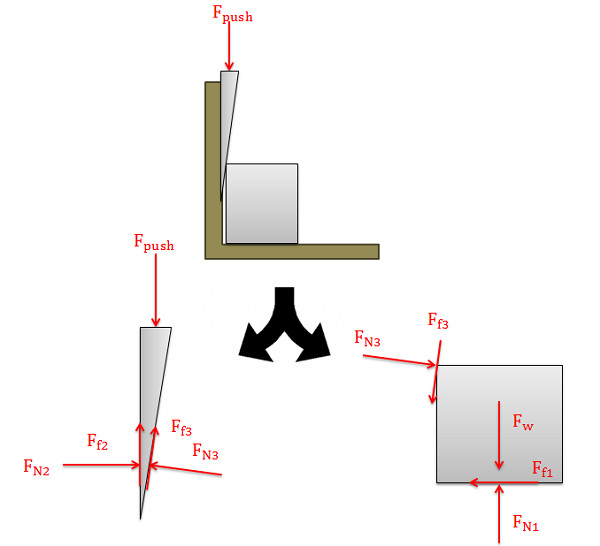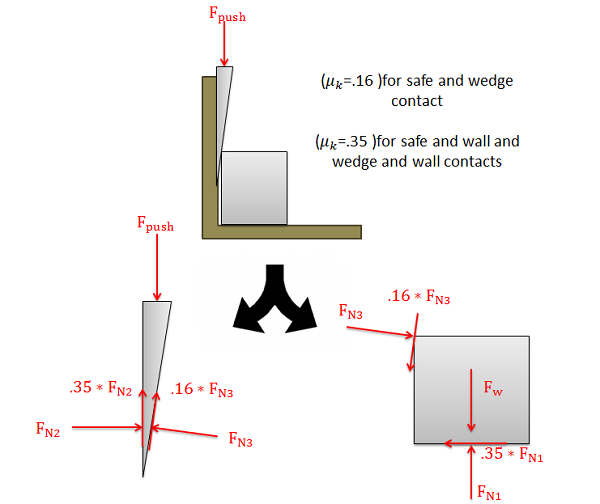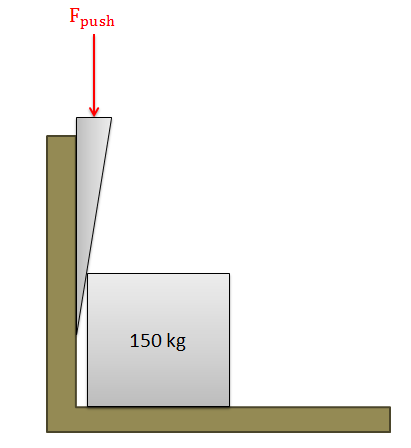6.3: Wedges
- Page ID
- 53829
A wedge is a thin, inclined-plane-shaped object that is used to force two objects apart or to force one object away from a nearby surface. Wedges have the effect of allowing users to create very large normal forces to move objects with relatively small input forces. The friction forces in wedge systems also tend to be very large, though, and can reduce the effectiveness of wedges.

To analyze a wedge system, we will need to draw free body diagrams of each of the bodies in the system (the wedge itself and any bodies the wedge will be moving). We need to be sure that we include the pushing force on the wedge, normal forces along any surfaces in contact, and friction forces along any surfaces in contact.

After we draw the free body diagram, we can work to simplify the problem. It is usually assumed that the wedge and the bodies will be sliding against one another, so each friction force will be equal to the kinetic coefficient of friction between the two surfaces times the associated normal force between the two forces. This reduces the number of unknowns and will usually allow us to solve for any unknown values.

With our simplified diagram, we will assume that the bodies are all in equilibrium and write out equilibrium equations for the two bodies. By solving the equilibrium equations, we can solve for any unknowns we have.
Example \(\PageIndex{1}\)
A heavy safe is being pushed away from a wall with a wedge as shown below. Assume the wedge has an angle of 5 degrees, the coefficient of friction (static and kinetic) between the wedge and the safe is 0.16, and the coefficients of friction (static and kinetic) between the wedge and the wall and the safe and the floor are both 0.35. What is the pushing force required to move the safe out from the wall?

- Solution
-
Video \(\PageIndex{2}\): Worked solution to example problem \(\PageIndex{1}\), provided by Dr. Jacob Moore. YouTube source: https://youtu.be/r7Ut0GI8q00.
Example \(\PageIndex{2}\)
A wedge as shown below is being used to lift the corner of the foundation of a house. How large must the pushing force be to exert a lifting force of one ton (2000 lbs)?

- Solution
-
Video \(\PageIndex{3}\): Worked solution to example problem \(\PageIndex{2}\), provided by Dr. Jacob Moore. YouTube source: https://youtu.be/kgfh4Mna63M.


